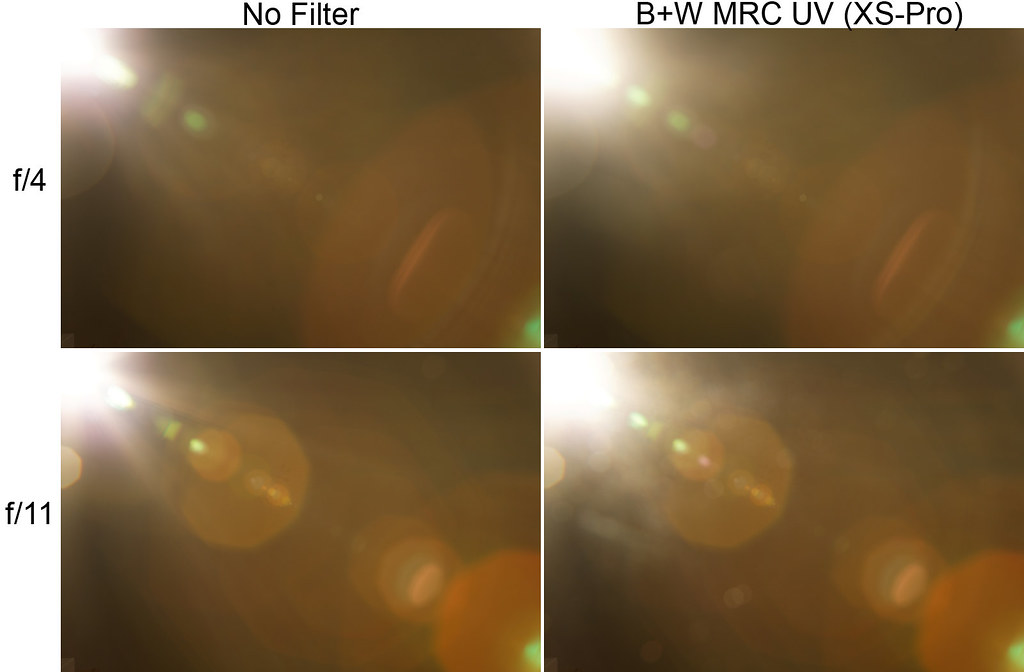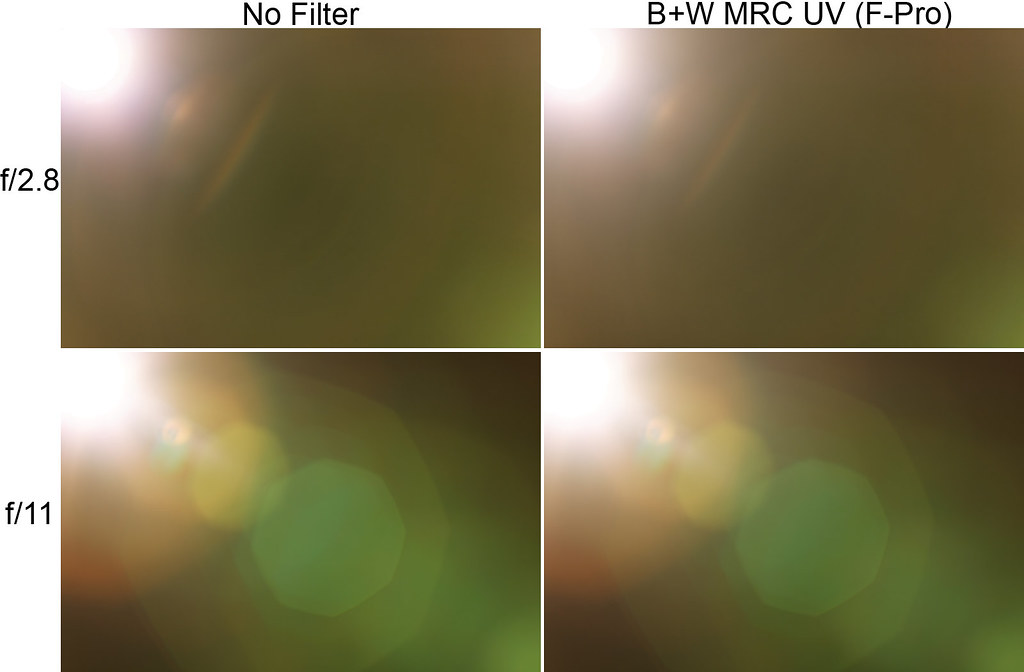-
Senior Member

Do high-quality filters cause flare?
This topic comes up frequently, most recently in a thread I was involved in over in another forum. So I set up a brief test this morning.
I used my 5DII and two different lenses (24-105mm f/4<span style="color: #ff0000;"]L IS @ 24mm and70-200mm f/2.8<span style="color: #ff0000;"]L IS II @ 200mm), each shot wide open and at f/11 without and with a B+W MRC UV filter. The appropraite lens hood was used. The light source was a halogen lamp (150W equivalent) in the upper left corner of the frame, in an otherwise completely dark room (literally, in fact, a darkroom).
This is rather a worst-case scenario - a small, very bright light source right in the corner of the frame, a pitch-black background, and no extraneous features in the image to mask the flare.
24-105mm f/4<span style="color: #ff0000;"]LIS @ 24mm:
[url="http://www.flickr.com/photos/dr_brain/5600755377/lightbox/] [/url]
[/url]
70-200mm f/2.8<span style="color: #ff0000;"]LIS II @ 200mm:

With both lenses in this rather extreme example, there is a very slight reduction in contrast with the filter installed. It's a little more noticeable at 24mm, probably because of the very tangential angle at which the light is positioned relative to the optical axis of the lens. That's unfortunate, since wide angle lenses are more likely to include a bright light source (i.e. the sun), and from a protection standpoint a filter is more important on a wide angle lens, because the lens hoods are much shallower and offer less protection.
Personally, it's not enough of an effect for me to eschew the easier cleaning, weather-sealing, and protection that a high-quality filter provides.
Thanks for looking!
--John
 Posting Permissions
Posting Permissions
- You may not post new threads
- You may not post replies
- You may not post attachments
- You may not edit your posts
-
Forum Rules
[/url]







 Reply With Quote
Reply With Quote